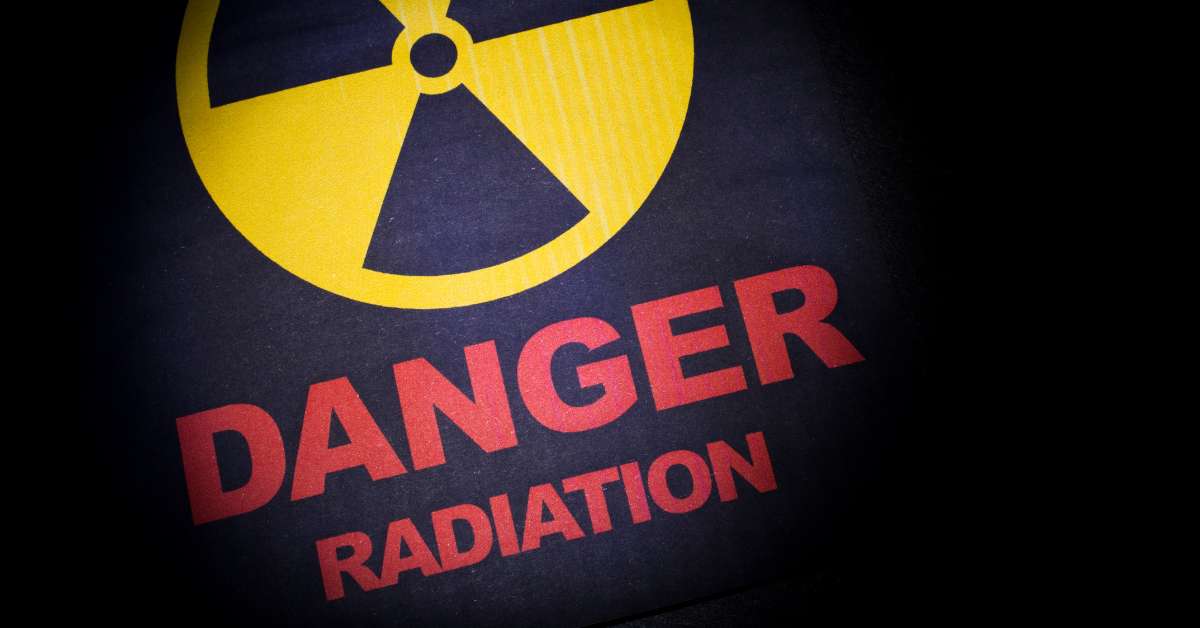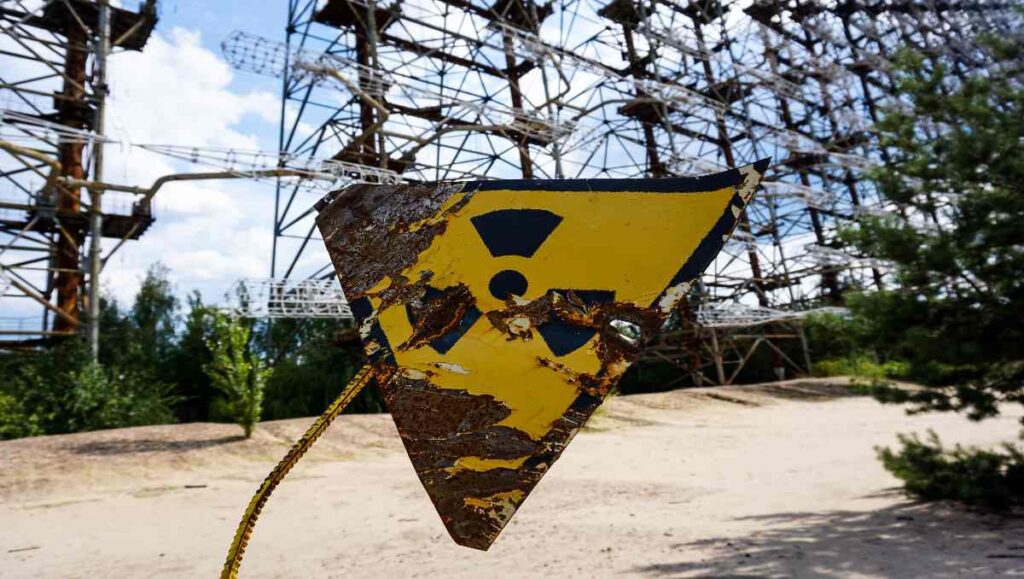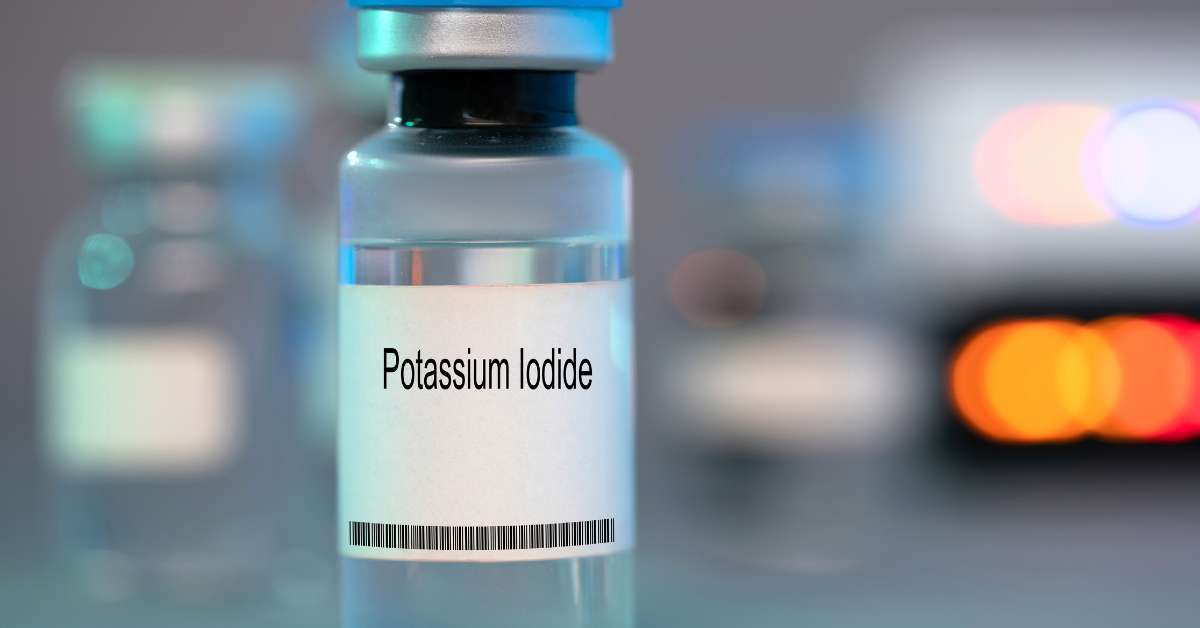Facing the immediate aftermath of a nuclear bomb is profoundly challenging. One of the paramount concerns is, “when is it safe to go outside after a nuclear bomb?” Those taking refuge in shelters are anxiously waiting for the moment they can step out and commence the recovery process.
Wait until radiation levels, as measured by detectors, have dropped to safe levels per authorities’ guidance before going outside after a nuclear bomb.
While the intense initial burst of radiation dissipates rapidly, fallout poses severe risks for days after. Learn how to interpret radiation readings, shelter safely, and protect your health once the fallout settles.
Understanding Radiation Risks After a Nuclear Detonation

Before going outside after a nuclear explosion, you need to understand the radiation risks. The initial blast causes intense radiation, but the particles in the fallout can spread far and wide. Learning how far the fallout travels, the duration of the threat, and how to detect radiation levels are crucial steps.
How Far Can Nuclear Fallout Spread After an Explosion?
The distance nuclear fallout spreads depends on the explosion size, wind patterns, and weather. For a 1 megaton surface blast, dangerous levels of radiation in the fallout zone can extend over 200 miles downwind. With strong winds, radiation travels farther. Rain can bring fallout to earth quicker.
Fallout dissipates exponentially over time and distance. Dangerous radiation levels may persist up to 2 weeks within 10-20 miles. Trace amounts can circle the globe. Stay tuned to authorities for fallout zone maps and updates.
Short and Long Term Dangers of Nuclear Radiation Exposure
In the short term, radiation exposure causes radiation sickness, skin burns, and acute cellular damage if you lack shelter from heavy fallout. Without treatment, moderate exposure can be fatal.
Long-term risks include cancer and genetic effects, especially from inhaling or ingesting radioactive particles. Iodine-131 collects in the thyroid gland, increasing thyroid cancer likelihood for years. Young children and the unborn are especially vulnerable.
Exposure is measured in rem. Doses over 100 rem cause radiation sickness; over 500 rem can be fatal without treatment. Cancer risks start increasing above 25 rem over a lifetime.
Using Geiger Counters and Dosimeters to Measure Radiation Levels

Having a battery-powered Geiger counter and dosimeters on hand to measure radiation is vital before going outside after a nuclear detonation.
Geiger counters detect current radiation levels in the environment. Look for counts per minute (CPM) instead of counts per second for more useful readings. Dosimeters measure cumulative exposure over time, usually indicated in rem.
Compare readings to hazard guidelines. Below 10 CPM is safe; up to 100 CPM is concerning but survivable with precautions. Get multiple measurements from different devices and locations. Rely on official guidance, not just your own equipment.
Waiting Until Radiation Drops to Safer Levels
To determine if it’s safe to go outside after a nuclear bomb blast, you’ll need to wait days or weeks for radiation emitted by fallout to dissipate to safe levels outside your bomb shelter, as measured by reliable detection equipment and guidance. Rushing outside too soon puts your life in mortal danger.
Why It’s Crucial to Shelter Inside Until Radiation Dissipates
Remaining inside sturdy, shielded shelter for at least 48 hours to 2 weeks after a nuclear detonation is absolutely vital to avoid dangerous or fatal acute radiation exposure from fallout particles.
Trying to evacuate prematurely through fallout is extremely hazardous. Fallout radiation strength decreases by 90% every 7 hours initially, but still remains hazardous for days to weeks in your local area. Attempting to drive or walk through fresh fallout risks high cumulative exposure.
Unless your shelter suffers direct blast damage or fire, staying put protects you best from fallout radiation.
Recommended Sheltering Times Before Leaving Safety
Authorities recommend staying at the bomb shelter for at least 48 hours after a nuclear blast to avoid fallout exposure. For medium to large explosions, it’s best to remain inside for up to 2 weeks unless confirmation of safe conditions is certain.
Venturing out even briefly before 48 hours exposes you to direct radiation from fallout potentially totaling over 500 rem, causing acute radiation sickness or death.
After 2 weeks, radiation has dropped to about 1/1000th initial levels. But remote fallout areas may still have dangerous readings, so verify it’s safe before leaving shelter. Don’t end sheltering until authorities give the all clear.
Consulting Authorities to Determine When Radiation Has Lowered
Rely on official guidance from emergency response authorities to determine when radiation has declined to safe levels after a nuclear detonation in your area.
Consult emergency broadcasts, officials, and response websites/hotlines to get region-specific updates on fallout zone maps, radiation readings, and safety recommendations before considering leaving your shelter.
Don’t use unverified social media or word-of-mouth as your radiation safety information sources. Wait for the official all clear notice from authorities before ending sheltering.
Signs that Radiation Has Reduced to Safer Levels
How can you know when radiation has lowered enough to carefully leave shelter after a nuclear bomb?

Key signs include:
- Direct readings from Geiger counters and dosimeters confirm radiation under 10-15 CPM outside your shelter, and under 0.1 mSv/hr on dosimeters.
- Authorities provide detailed confirmation that radiation has fallen to safe levels in your local area and project it will remain stable.
- No new warnings or fallout patterns have been issued for at least 48 hours as winds shift.
- Precursory trips outside the shelter by trained personnel yield safe readings when appropriately shielded and brief.
Do not rely on gut feelings. Use science-based measurements and official clearances before ending sheltering. Safety takes time and diligent monitoring.
Taking Precautions Before Going Outdoors After a Nuclear Blast
Once radiation has dropped to safer levels, you still need to take precautions when going outside after a nuclear explosion to avoid exposure risks.
Wearing Full Skin Coverings and Protective Clothing

Before exiting the shelter after a nuclear detonation, dress in layers of covering footwear and clothing for radiation protection. Wear long pants, long sleeve shirts, hats, gloves, boots or closed shoes to minimize skin exposure to any residual fallout particles.
Outer garments like rain ponchos or coveralls add extra protection. If you have or find any nuclear gas masks, wear them. If any clothes appear contaminated by fallout dust or debris while outside, remove and bag them before reentering your shelter. Shower and wash all exposed hair and skin.
Bringing and Using Radiation Detection Equipment
Carry well-calibrated Geiger counters, dosimeters, and particulate respirators when leaving shelter after a nuclear blast. Continuously monitor Geiger counter readings when outside.
If counts rise above 15 CPM, immediately put on the respirator and return to shelter. Change clothes and shoes, bag contaminated items, and shower to remove any fallout particles before venturing outside.
Minimizing Time Spent Outside and Checking for Symptoms
Initially limit any essential outdoor trips to under 30 minutes after a nuclear detonation, even if radiation appears stable. Check yourself for symptoms like nausea or skin burns before going back inside.
Gradually increase your outside time daily if radiation remains low to test for delayed fallout effects. Have radiation-free shelter ready in case you must immediately decontaminate or treat acute radiation sickness.
Being Prepared to Quickly Return Indoors for Safety
When going outdoors after a nuclear explosion, even when radiation is stable, always be prepared to rapidly return indoors if you encounter elevated readings or fallout hazards.
Carry communications, immediate shelter directions, contingency plans, and emergency supplies in case you must get to safety quickly. Having an exit plan and proper provisions can save your life.
Locations and Activities to Avoid After Nuclear Fallout
In addition to taking protective measures when going outside after a nuclear detonation, you must avoid high-risk areas and activities that can expose you to dangerous levels of radiation.
Staying Away from Downwind Areas Near the Blast
Initially steer clear of downwind areas in the direction of the fallout plume from the blast site. Heavy localized fallout is most concentrated there as winds carry particles to earth.
Consult fallout prediction maps to determine the highest risk areas downwind. Even if you are upwind, stay away from ground zero unless authorities indicate it’s safe to assist recovery efforts while protected. Also, do your best to get information about potential targets and safe zones so you know where to go and what places to avoid.
Avoiding Contact with Debris, Ash, and Dust From Fallout
When going outside after a nuclear explosion, do not touch, disturb, or inhale any dust, dirt, ashes, or debris scattered by the fallout. They contain concentrated radioactive particles.
Wear particulate respirators and protective clothing to avoid ingesting or inhaling fallout. Avoid stirring up settled fallout particles. Monitor your surroundings continuously for changes.
Not Consuming Local Food or Water With Fallout Particles
After a nearby nuclear detonation, do not eat local produce, milk, or water that may have been contaminated by fallout until authorities confirm they are safe. Radioactive iodine, cesium, and other particles can be directly absorbed into local plants and water sources, delivering damaging internal radiation if ingested.
Import safe water and shelf-stable food until local supplies are tested extensively. Scrub vegetables and fruit carefully and peel them first.
Monitoring Skin and Clothes for Radioactive Dust or Debris
When returning from any excursions outside after a nuclear explosion, carefully monitor your clothes and skin for any specks or dust from fallout debris.
If detected, immediately remove the items in question, shower thoroughly, and bag the contaminants for disposal according to official guidelines. Check dosimeters for exposure levels.
Decontaminate any skin, hair, tools or surfaces touched. Report any substantial fallout dust contact to the proper authorities. Staying vigilant prevents further radiation spread.
Long-Term Health Risks and Precautions After Exposure
Surviving the initial fallout after a nuclear detonation doesn’t mean the danger is over. It’s critical to understand the potential long-term health risks of radiation exposure and the precautions you should take.
Monitoring for Signs of Acute Radiation Sickness
The early symptoms of Acute Radiation Syndrome (ARS) include nausea, vomiting, and skin redness. These appear between a few hours to a few days after exposure, depending on the dose received. If you experience any of these symptoms, seek medical attention immediately.
High doses of radiation affect the blood cells, damaging the bone marrow and affecting the immune system. In the following weeks to months, symptoms including loss of appetite, fatigue, fever, nausea, vomiting, and diarrhea may appear. Do not ignore these signs; instead, get immediate medical attention.
Getting Tested for Internal Radiation Exposure
Internal radiation exposure occurs when radioactive material is swallowed or inhaled — it can also enter through an open wound. To detect this, medical practitioners may use whole-body counters and bioassay tests. Regular testing helps diagnose the level of internal contamination.
Whole body counting involves lying still under a large detector that records the radioactivity in your body. From the results, doctors can determine if you have internal contamination and the radiation dose your body absorbed.
Taking Potassium Iodide to Protect Your Thyroid

Following a nuclear detonation, radioactive iodine can be released, which if inhaled or ingested, concentrates in the thyroid gland and increases the risk of thyroid cancer. To mitigate this risk, potassium iodide (KI) pills can be ingested, but only as advised by health authorities.
Potassium iodide, if taken at the correct time and dosage, blocks radioactive iodine from entering the thyroid gland. It effectively reduces the risk of thyroid cancer, especially in children and young people who are particularly sensitive. Always follow guidance from local and national health authorities before taking KI pills.
Understanding Increased Cancer Risks from Radiation
Long-term exposure to radiation can lead to an increased risk of cancer. Types linked to radiation exposure include thyroid, lung, stomach, breast, and many others. It is essential to understand these risks for long-term health management.
Increased cancer risk depends on the dose and duration of radiation exposure, amongst many factors. In particular, younger people are more susceptible because their bodies are still growing and developing. Frequent medical check-ups can help track your health status and early detection of any potential problems.
Determining When It’s Safe to Go Outside After a Nuclear Bomb Blast and Resume Normal Routines
Even after initial radiation settles, returning to normal routines requires careful consideration and planning.
Waiting for Official Government All-Clear Notices
After a nuclear detonation, it’s crucial to wait for official notifications from the government affirming safety before resuming normal routines. These notifications will provide accurate information about radiation levels, safety measures, and any specific areas to avoid.
Make sure to tune in to your local news sources, check official government websites, and follow any national advisories. In these volatile situations, misinformation can spread rapidly, so ensure that your news is coming from a reliable source.
Confirming With Multiple Radiation Detection Sources

In addition to government notices, it’s wise to verify safety conditions using various radiation detection sources before resuming normal activities. These sources could include personal radiation detection devices, community-level monitoring posts, or online platforms providing real-time radiation data.
Confirming with multiple sources assures you of the accuracy of the radiation data. It’s absolutely essential to cross-check the data or get a second opinion if you’re uncertain of the readings.
Gradually Spending More Time Outdoors to Test Exposure
Once radiation levels are officially declared safe, it’s still prudent to gradually increase your outdoor time rather than suddenly reverting to your pre-event routines. This allows your body to adapt to any remaining low levels of radiation and can act as a personal test for any undiscovered pockets of radiation.
Begin by temporarily venturing outdoors. Gradually increase your time outside and always retreat in case of unexpected radiation symptoms. Regularly consult with healthcare professionals and report any odd symptoms promptly.
Returning to Work, School, and Regular Activities
Eventually, as safety is confirmed, life will slowly start returning to normal. Schools will be reopened, workplaces will resume operation, and it’ll be time to participate in day-to-day routines again.
This doesn’t mean forgetting the past event but learning and evolving from it. It’s important to not fall back into complacency and decrease your vigilance concerning radiation safety.
You might be interested in discovering essential strategies on surviving nuclear war without a bunker.
Be Smart, Don’t Rush: Know When It’s Safe to Go Outside
Surviving a nuclear event extends beyond the initial impact; it’s an ongoing process that demands persistent vigilance, awareness, and caution. The question of when is it safe to go outside after a nuclear bomb is paramount, and it’s essential to always prioritize safety over convenience, even when it feels right to let your guard down.
The desire to revert to familiar routines is natural, but safety must always come first. It’s crucial to act wisely, stay composed, and not be hasty.

Whomever wrote this article must have been a time traveler from the 1950s or has been living under a rock for the last 20 years. If there is a nuclear war, it is because our government started it. Our government is controlled by the globalist and the purpose of a nuclear war is to exterminate as many humans in earth as possible. The people that survive the initial blasts and are taking shelter are going to be lied to about the levels of radioactivity because they want you to get a lethal dose and die. You can’t believe anything the government tell you now, why would you believe anything they would say after a nuclear war? You will probably be on your own anyway so you better get a copy of Cresson Kearney’s Nuclear War Survival Skills while you still can. It’s a free download and you should print at least one hard copy. Build the Kearney Fallout Meter and learn how to use it. It is made out of a tin can, tin foil, string and a clear plastic cover. It is as accurate as an electronic unit because it is designed on principals of dimension, weights, electro-static charge and time. An eighth grader could build it. It will save your ass. There is information on how to build a fallout shelter in just a matter of hours and info on everything you need to have with you for two weeks to several months.
Even when cable news “talking heads” tell us for the umpteenth time that “We are in the most dangerous period since the Cuban Missile Crisis,” the overwhelming mass of Americans do absolutely nothing in order to prepare. Most throw up their hands and say, “Well, what can you do?” Others flippantly say, “I’ll just run toward Ground Zero and get evaporated. Both attitudes are simply a dodge, and they are the product of pure intellectual laziness.
Concerning the “evaporation mentality,” exactly how would most people know exactly where Ground Zero would be or whether they could get there in time? And then what if the blast simply leaves them horribly burned, with broken bones, in a heap against a wall for days?
The reality is that only a small percentage of the country’s population will die from heat and blast. While a large number of Americans will suffer no physical damage at all, fallout will kill a far larger number.
If nuclear war with the Russians or Chinese occurs, it will likely be a “come-as-you-are” war.
Educate yourself now. Prepare now.